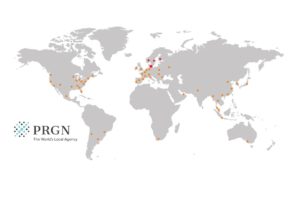
By Christina Rytter, Founder & Crisis Communications Advisor
The Scandinavian countries have not been spared the coronavirus pandemic. As of this Friday morning Denmark reports 674 cases of the coronavirus. Norway reports 734 cases and the first fatality. Both countries now shut down schools and universities for the coming two weeks. Denmark furthermore encouraged companies to let people work from home – and bars, restaurant and clubs to stay closed. Danish indoor events with +100 participants are banned.
Sweden reports 667 cases of coronavirus as of today with every region in the country affected and had the first fatality linked to the virus in Scandinavia. Sweden now bans large public events for +500 people. Finland does the same with today’s reported number of 59 cases of the coronavirus.
The time is now
You need to take charge of your communications before rumours, panic, fear or anger does. Most humans don’t like sudden change – and they will fill in the blanks of missing information with their own interpretation of, what might happen next. Everyone carries their personal backstory and life experience, that will be the starting point to fill in the blanks if their leader doesn’t. Often peoples own guess of what happens next in crisis and change is their worst-case scenario – driven by strong emotions like fear or anger. Starting rumours or impulsive negative reactions.
Therefore, a quick response is key in a critical situation, because it gives you the chance to handle and control the communications around the situation and thereby the outcome proactively with a higher possibility for success. BUT the quick response must be flanked by carefully thought out communications – especially what key messages you need to deliver in the conversation with your different stakeholders.
Create order in your own house first
As a first step, you need to prepare for information and conversation. And as with the situation of the coronavirus in every case that has or can have an effect on your employees it is vital to create order in your own house first. Clear internal communications must be your first step. Over the years I have seen many examples of how a crisis or change suddenly turned MUCH worth do to internal rumours and unforeseen actions from employees driven by fear or anger because management and boards were too busy focusing on external communications as their first step. To let employees, learn about for example their potential job loss for the first time via the news, is not the way to do it! Always unintended of cause, but still this can happen if you don’t start with and steer internal communications quite firm in a crisis and change.
Get ready for Corona conversation
In your crisis communication around the coronavirus, the most effective way is to draw up and work with different realistic crisis or change scenarios and plan, what to do and say in each imaginary scenario – and which communications channels will suit your messages and conversations with different internal and external stakeholders best.
Scandinavians are very critical and direct – and we don’t hold back with the questions. This apply to both employees, journalists, clients, business partners and competitors. So, you really need to prepare.
Create your Q&A:
- What is your overall intention with this information?
- What is your key message? Your communication is clearer, when you only focus on one or few key messages.
- Who are you talking to? (Your key target group/stakeholders)
- Which information do the person/stakeholders need?
- Which situation are they in? Communicate the messages relevant to them, not to you.
- Choose your role based on the person/target group. Are you formal or informal? How do you dress? What language and body language do you use? BUT be yourself!
- Prepare, prepare and prepare. Train, train and train.
Take the opportunity to show your values
In a crisis case like the coronavirus pandemic, suddenly we as companies as well as humans get a higher common purpose to stick together and help each other. It must be people before profit. So as a company or organization, you need to find out how you can do your best – and at the same time, it is an opportunity to show the world your values and corporate social responsibility.
Corona Communications Kudos and Fail of the week
A great positive example that deserves Corona Communication Kudos from Denmark this week is a joint press release from leading retail companies AND competitors Coop, Salling Group, Dagrofa and Rema 1000. The release informs Danes that there will be plenty of convenience goods in the stores in the coming weeks. In this way taking proactive social responsibility to secure that people are not stockpiling food driven by fear and uncertainty. In this way, the companies as suppliers and industry experts fill in the Danes communications blanks with clear and trustworthy information to create security. At the same time show their corporate values and leave us as consumers with positive feelings and stronger awareness around their brands. Even a feeling of pride that we have such companies in Denmark.
The Corona Communications Fail of the week I must assign to Airbnb that refuses scores of refunds if you cancel your trip. This is also a way of communication the company values very clear. But I’m sure in the light of the coronavirus setting profit over people at this time, is very shortsighted and will damage the brand and not been taken lightly by the clients. The stakes are even higher for Airbnb, because this is the company wants to debut on the stock market – so their reputation has never mattered more.
Remember all in all in crisis and change when your response quickly and are well prepared, you can turn the difficult situation into an opportunity to show authentic positive values – if you have them 😉. By working out a carefully thought out message platform with key messages as a first step. And train through the different scenarios with message- and media training, you can navigate successfully through. Get your Corona Crisis Communications Action Plan in order; Whom do you need to communicate to as a first step? When and how? If you handle crisis and change like this, people will understand you much better – and even get on your side. When you keep calm and friendly – and communicate in a clear and authentic way you be at the forefront of things. And as always, the most important thing is to prepare – and train, train, train!
Get free advice for your Corona Crisis Communications
Don’t hesitate to contact directly if you need help. We offer a free 20-min call with personal advice for your Corona Crisis Communications – book at the webpage formula.
Book your free call and learn more about Crisis Communications










